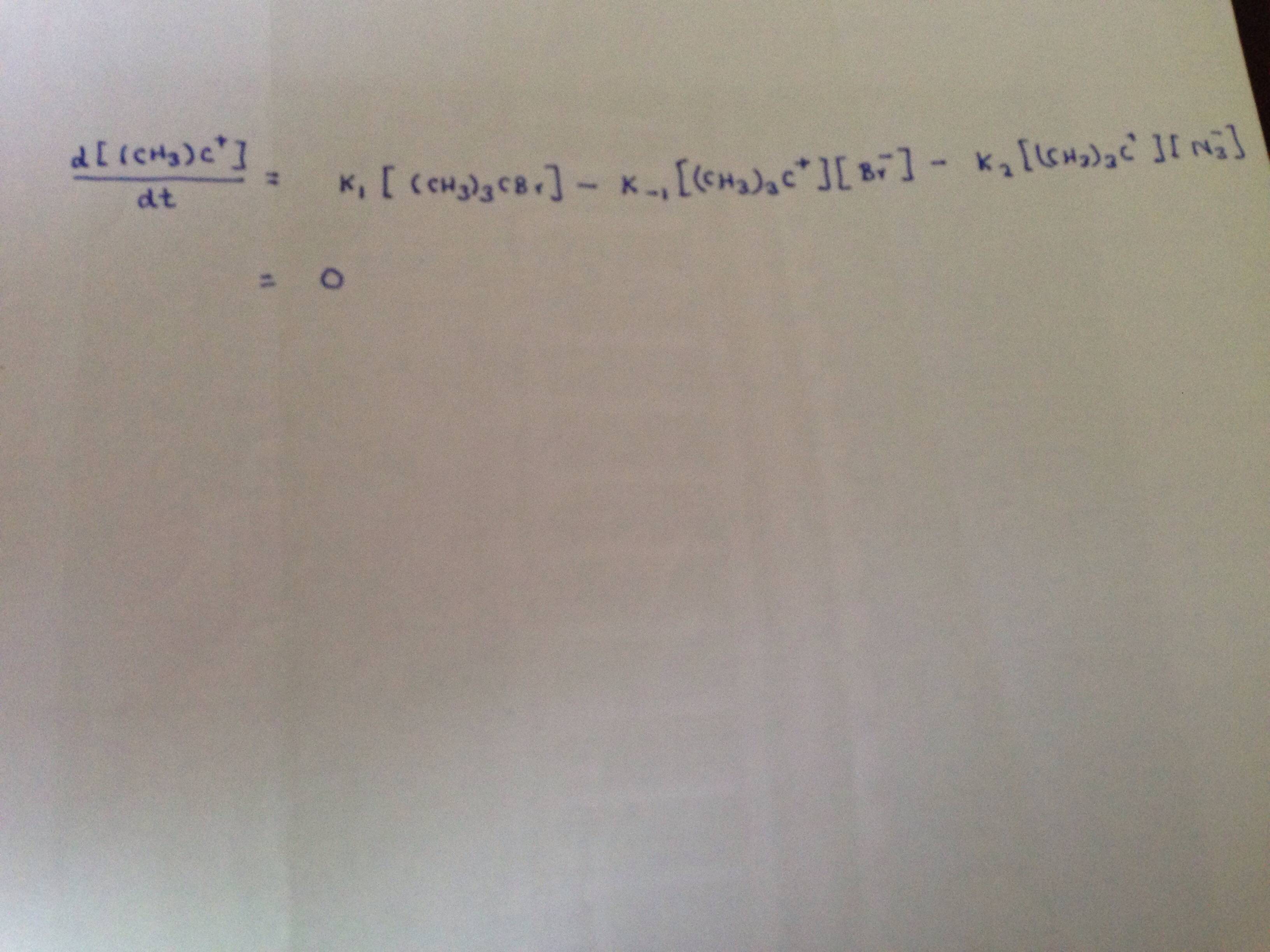The reaction of tert-butyl bromide with azide ion in aqueous solution is proposed to proceed by the following mechanism:
$\ce{(CH3)3CBr(aq) <=>(CH3)3C+(aq) + Br–(aq)}$
$\ce{(CH3)3C+(aq) + N3–(aq) \to (CH3)3CN3(aq)}$
Assuming that $\ce{(CH3)3C+ (aq)}$ achieves a steady-state concentration, but making no further assumptions about the relative magnitudes of the three rate constants, what is the rate law for this reaction, where $k_1$ is the forward reaction rate of the first equation, $k_{-1}$ is the reverse reaction rate of the first equation, and $k_2$ is the forward reaction rate of the second equation?
(A) $\ce{k_1[(CH3)3CBr]}$
(B) $\ce{k_2[(CH3)3CBr][N3-]}$
(C) $\ce{\displaystyle\frac{k_1k_2[(CH3)3CBr][N3-]}{k_{-1}[Br-]}}$
(D) $\ce{\displaystyle\frac{k_1k_2[(CH3)3CBr][N3-]}{k_{-1}[Br-] + k2[N3-]}}$
My thoughts: First of all, I read that $\ce{(CH3)3C+ (aq)}$ is a steady state concentration, which meant that $\frac{d\ce{[(CH3)3C+ (aq)}]}{dt} = 0,$ which prompted me to write out differential equations for each reactant. Thus, I got a system of differential equations: $$\frac{d\ce{[(CH3)3CBr (aq)}]}{dt} =-\frac{k_1}{k_{-1}}\ce{[(CH3)3CBr (aq)}]$$ $$0=\frac{d\ce{[(CH3)3C+ (aq)}]}{dt} = -\frac{d\ce{[(CH3)3CBr (aq)}]}{dt} - \frac{d\ce{[(CH3)3CN3 (aq)}]}{dt} = \frac{k_1}{k_{-1}}\ce{[(CH3)3CBr (aq)}] -k_2 \frac{d\ce{[(CH3)3CN3 (aq)]}}{dt}$$ $$\frac{d\ce{[Br- (aq)}]}{dt} = -\frac{d\ce{[(CH3)3CBr (aq)}]}{dt} = \frac{k_1}{k_{-1}}\ce{[(CH3)3CBr (aq)}]$$ $$\frac{d\ce{[N3- (aq)}]}{dt} = -k_2\ce{[N3-(aq)]}$$
But I was unsure of how to use these differential equations to actually find the rate law. Could anyone provide any suggestions?




